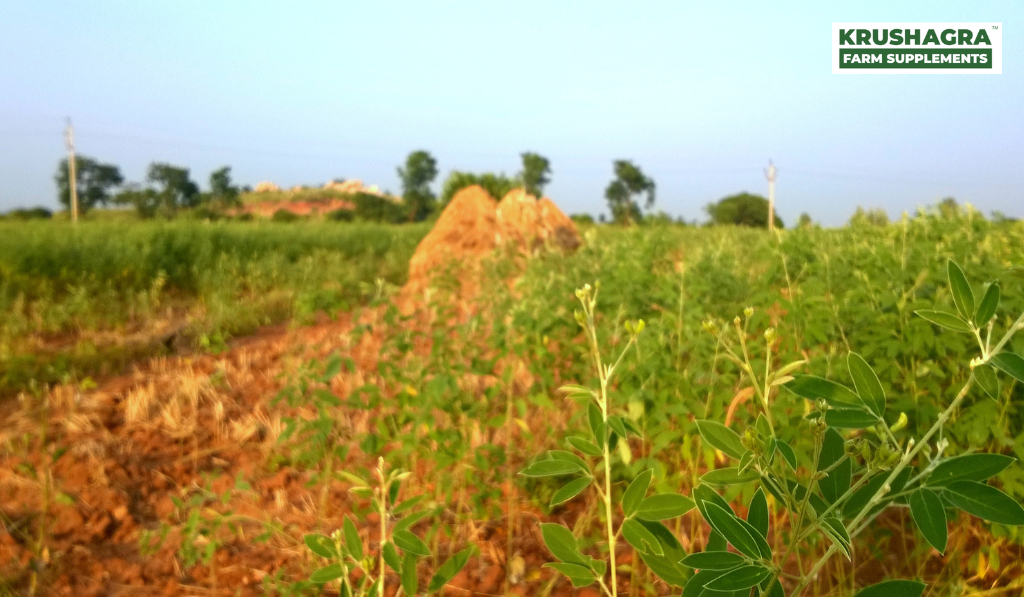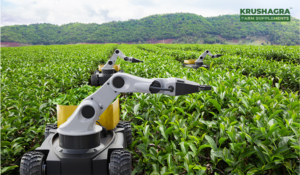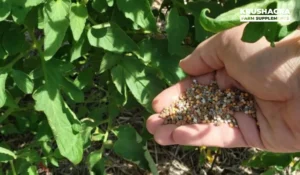Introduction
In the quest for sustainable and eco-friendly agricultural practices, biofertilizers have emerged as a powerful tool that holds the potential to revolutionize crop production. Among these biofertilizers, those geared towards nitrogen fixation stand out as game-changers for enhancing the growth and yield of crops like red-gram (also known as pigeon pea). This blog delves into the world of biofertilizers, particularly their role in nitrogen fixation, and how they are transforming red-gram production on a global scale.
The Nitrogen Puzzle:
Nitrogen is an essential nutrient for plant growth, and its availability significantly influences crop yield. However, the conventional method of meeting crop nitrogen requirements through synthetic nitrogen fertilizers has drawbacks. Excessive use of these fertilizers can lead to environmental issues like soil degradation, water pollution, and greenhouse gas emissions. Here is where biofertilizers come into play, offering an ecologically sustainable alternative.
Biofertilizers: Nitrogen Fixation Powerhouse
Biofertilizers are natural products that contain living microorganisms that enhance nutrient availability to plants. Among these, nitrogen-fixing bacteria, also known as rhizobia, are particularly crucial. They form symbiotic relationships with leguminous plants like red-gram, forming specialized structures called nodules on plant roots. Inside these nodules, rhizobia convert atmospheric nitrogen into a form that plants can use, thereby providing a steady and renewable source of nitrogen.
Red-Gram and Nitrogen Fixation
Red-gram is a vital leguminous crop known for its nutritional value and contribution to sustainable agriculture. Traditionally, red-gram production relied on synthetic nitrogen fertilizers, which came with ecological and economic concerns. However, the introduction of nitrogen-fixing biofertilizers has transformed red-gram cultivation. By partnering with rhizobia, red-gram plants can now tap into atmospheric nitrogen, reducing the need for synthetic fertilizers and minimizing their adverse effects.
Environmental Benefits of Nitrogen-Fixing Biofertilizers:
- Reduced Greenhouse Gas Emissions: By relying less on energy-intensive synthetic nitrogen fertilizer production, the use of nitrogen-fixing biofertilizers lowers the carbon footprint of agriculture, contributing to climate change mitigation.
- Soil Health Improvement: Biofertilizers enhance soil structure and microbial diversity, leading to improved water retention, aeration, and nutrient availability. This, in turn, promotes healthier and more resilient soil ecosystems.
- Water Pollution Mitigation: Synthetic fertilizers can leach into water bodies, causing pollution. Nitrogen-fixing biofertilizers reduce the risk of fertilizer runoff, helping to maintain water quality and safeguard aquatic life.
- Biodiversity Conservation: The use of biofertilizers reduces the negative impact on non-target organisms, such as insects, birds, and beneficial microorganisms, contributing to overall biodiversity conservation on and around farms.
Economic Benefits of Nitrogen-Fixing Biofertilizers:
- Reduced Fertilizer Costs: Farmers can cut down on their fertilizer expenses by using nitrogen-fixing biofertilizers, which provide a natural and renewable source of nitrogen for plant growth.
- Increased Crop Yields: Improved nutrient availability and enhanced soil health resulting from biofertilizer use can lead to increased crop yields, potentially boosting farmers’ income and profits.
- Market Demand and Premium Pricing: As consumer awareness of sustainable farming practices grows, the demand for crops grown with eco-friendly methods, including biofertilizers, is increasing. Farmers can tap into premium markets by offering produce that aligns with these preferences.
- Long-Term Sustainability: The use of biofertilizers supports sustainable farming practices by maintaining soil fertility and reducing the reliance on synthetic inputs. This leads to long-term economic stability for farmers and the agriculture sector.
- Resource Efficiency: Biofertilizers utilize atmospheric nitrogen, which reduces the demand for energy-intensive nitrogen fertilizer production. This conserves resources and aligns with efficient and responsible resource management.
- Reduced Input Dependency: By fostering a healthier agroecosystem, biofertilizers can help farmers gradually reduce their reliance on synthetic inputs, resulting in cost savings and increased self-sufficiency over time.
Symbiotic Partnerships in Leguminous Plants:
The journey towards unlocking the potential of nitrogen-fixing biofertilizers rests upon a profound partnership between plants and microorganisms. These biofertilizers operate on the principle of symbiosis, a remarkable collaboration between leguminous plants like red-gram and nitrogen-fixing bacteria, notably rhizobia. This symbiotic relationship involves a sophisticated exchange: plants provide energy resources to the bacteria, while the bacteria, in turn, convert atmospheric nitrogen into a usable form. The result is the formation of nodules on plant roots, where rhizobia efficiently convert inert nitrogen gas into nutrients that plants can absorb. This partnership’s success hinges on selecting the right rhizobial strains and ensuring proper inoculation, setting the stage for robust nitrogen fixation and healthier crops.
Global Impact and Future Prospects
The adoption of nitrogen-fixing biofertilizers resonates far beyond individual fields, sparking a transformative global impact. By diminishing reliance on synthetic nitrogen fertilizers, agriculture can proactively address environmental concerns. The reduction in excess fertilizer usage curbs pollution, conserves energy, and mitigates the release of greenhouse gasses. Moreover, this technology aligns with the push for increased food security, as biofertilizers have the potential to enhance crop yields, especially in regions facing limited access to conventional fertilizers. Continued research and innovation are expanding the reach of biofertilizers, extending their application to various crops and agroecosystems. Collaborative efforts between governments, research institutions, and farming communities are fostering the adoption of biofertilizers through education, training, and support. As the world shifts towards sustainable agricultural practices, nitrogen-fixing biofertilizers stand as a beacon of promise, steering global agriculture towards greater resilience, environmental harmony, and food security.
Conclusion:
The evolution of red-gram farming through nitrogen-fixing biofertilizers paints a promising picture for the future of agriculture. By teaming up plants and microorganisms, we’re finding ways to farm smarter, cleaner, and more efficiently. As the world turns its attention to sustainable farming, biofertilizers are shining a light on a path that leads to healthier crops, happier ecosystems, and a greener Earth.






